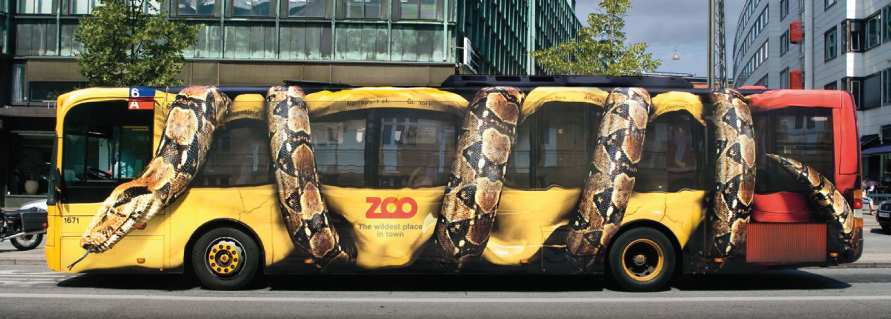
The word “deceive” has a negative connotation. It’s hard to use it without bringing to mind ways in which people have been misled or taken advantage of. Deception is generally associated with the lying teenager, the cheating spouse or the corrupt politician.
Is it possible to deceive in a good way? Ask any graphic designer and the answer is sure to be a very definitive “YES.” Artists and designers have been playing tricks on our eyes for ages. When done properly, visual illusions are a useful and fascinating way to design.
As a child, you probably learned about the master of deception, MC Escher. His mathematically inspired drawings are well known for their frustrating perspectives and seemingly impossible geometry. He played tricks on our eyes causing us to stop and think, which is one of the greatest benefits to this type of deception in design.
One of the most fascinating examples of visual deception in history is the Ghost Army of World War II. (Seriously, go read about this right now.) The Ghost Army was a special unit of the U.S. Army designed specifically to trick and confuse the German Army. This unique unit was made up of artists, advertisers and design students, tasked with creating fake, but believable battle scenes.
Inflatable tanks were painted to look realistic enough from a distance to thwart the enemy troops. The Ghost Army moved around frequently and adapted each staged scene to fit a particular narrative. Badges and insignia were easily redesigned, and speakers playing recorded infantry sounds could be mixed and matched depending on the location.

Not all visual deceptions are as large scale and top secret as the the Ghost Army. Designers and advertisers often create playful illusions meant to create brand awareness simply by causing viewers to do a double take and ask, “What am I looking at?”
In 2009 the Copenhagen Zoo got a lot of attention with its unique city bus advertisements. Several public buses were made to look as though enormous boa constrictors were squeezing and crushing them. At first glance, the vehicle wraps gave the impression the buses were truly misshapen. The graphics were successful at building brand awareness because we’re used to seeing buses every day, but rarely one that truly stops us in our tracks. A very large, incredibly realistic snake about to make something as mundane as a bus his breakfast? Now that’s going to leave a lasting impression.

Students at New York’s School of Visual Arts recently played tricks on the eye when they designed these clever bags for The Lego Store. At first glance the bags make it appear as though the shopper has the iconic yellow hands of a classic Lego figure. It’s not often a shopping bag makes us laugh, but this one is guaranteed to get the approval of both adults and children. Appealing to a wide audience is part of how Lego remains timeless, despite being around since 1949. This design is simple and charming, which makes perfect sense for a playful brand like Lego.
You don’t need to be a toy brand to take advantage of bold visual tricks. A Toyota dealership in Kentucky now has a one-of-a-kind showroom feature thanks to Chicago-based designer, Thomas Quinn. Quinn played with perspectives to create a type design that is warped and unreadable unless you are standing in one specific location.
The phrase “TEST YOUR FOCUS” was painted on several surfaces around the dealership’s distracted driving simulator. What makes the design especially strong is the way it enhances Toyota’s message about focused vision. In this case, the skewed perspective isn’t just there for show, it’s part of the experience.

The idea of deceiving people using visual tricks isn’t new, but it’s still uncommon enough to make a project or campaign memorable. When it comes to design and advertising, we’re often drawn to the unexpected. As we go about our daily lives we interact with hundreds of designs, brands and advertisements, so when one finally manages to surprise us, we’re going to take note.
The key to this kind of clever design is not to force it. The imagery needs to integrate seamlessly with the overall message or goal. When used sparingly and in the right context, visual deception can be a really unique way to set your brand apart.
Roundpeg is an Indianapolis graphic design firm.

